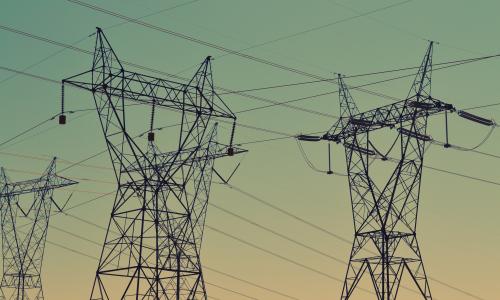
The Resilience of Indonesia's Electricity System
This article was published in Koran Tempo on January 3, 2020.
The government has determined to streamline investment and get as many investors as possible to Indonesia. But does our electric power system have enough resilience, supply and distribution scale to support the plan?
The island of Java experienced a severe power outage back in August 2019, despite having excess supply of electricity over the past few years. The 15-hour blackout paralyzed the transportation sector as well as some retail businesses and home industries with no access to personal electricity generators.
Across the archipelago, the government is still in control of the majority of power generation, transmission and distribution through the State Electricity Company (PLN). Thus, electric power distribution and regulation remain centralized. It is not surprising that the disruption on the extra high voltage (EHV) transmission network such as in Unggaran and Pemalang, Central Java, last August affected most grids on the island.
Now, it is hard to believe that this archipelagic country that has been independent for 74 years still relies on a centralized electric power distribution and transmission while electric power distribution automation system and environmentally friendly energy are becoming the global trend.
The electric power distribution automation system, known as a microgrid, is designed for grid flexibility, data processing and different interconnections. Flexible power grid is only possible when different renewable energy sources, such as solar and wind, are combined with batteries and diesel generator sets that are connected to a central grid. If the central grid is disrupted, the microgrid can then immediately disconnect from it and connect to other microgrids to supply electricity until the central grid recovers.
In line with the government's plan to reduce carbon emissions and increase the use of renewable energy, power plants must also switch to renewable sources. Unfortunately, some potential renewable energy sources, such as solar and wind, still cannot offer enough stability to supply a centralized grid. For that reason, electric power systems must be digitalized and distributed.
Further, applying digital technology in electric power supply system has the potential to encourage consumers’ participation in supplying electricity independently. This approach is called prosumer, where consumers are involved in developing products or services offered by energy providers. Grid digitization also plays an important role in capturing data on energy use by consumers. Based on the data, electric power providers can adapt and offer more targeted services or products.
We can only imagine if access and choice to available electrical products were as easy and varied as offers from online transportation applications. Currently, the e-commerce sector or any businesses with online platforms apply a prosumer approach. The sector and these businesses also analyse their consumer needs data that are generated from consumers’ use of their applications. Using their own algorithms, they compete in recognizing the customers’ buying patterns and favourite choices, predicting consumer needs and adjusting on prices and services.
Meanwhile, solar panel installation in elite housing complexes has become the new trend in electric power supply in Indonesia’s urban areas. Several global groups, including IKEA and P&G, have also stated their commitments to ensuring the use of renewable energy where they invest in. Such consumer preferences should be noticed by PLN so they can provide energy supply effectively and, therefore, maximize their profits.
In the coming years, the digital era and strong global commitments to the use of cleaner and renewable energy will greatly influence the demands and consumption patterns of electricity users. In some countries, several electric power supply companies are facing bankruptcy threats for failing to anticipate the trend. For example, Vattenfall, a Swedish company, had to let go of their coal plant following the policy issued by the German government to gradually stop using coal. Another example is Eskom, a South African state-owned enterprise that controls 95 percent of the national electricity sector. It reported a loss of billions of dollars in 2019 due to debts incurred from stalled coal power plant constructions.
To that end, the Indonesian government's plan to achieve the target of 23 percent new renewable sources in the energy mix must be accompanied with technological innovations. Responsible for ensuring electric power availability and security in Indonesia, PLN has the chance to initiate new opportunities for the development of renewable energy-based power plants that can be profitable for the company and beneficial to more than 70 million electricity consumers throughout the country.